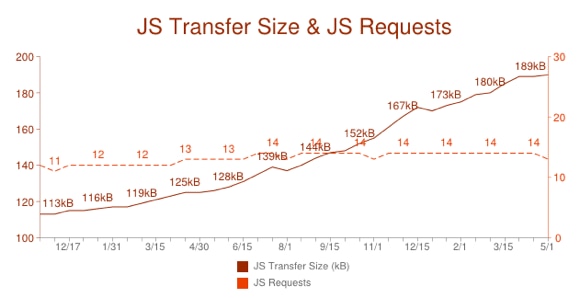 Websites are getting more dynamic, and more heavily scripted. JavaScript is going through something of a renaissance. Perhaps, however, it is time to start reigning in the amount of JavaScript code that’s included on the average web page.
Websites are getting more dynamic, and more heavily scripted. JavaScript is going through something of a renaissance. Perhaps, however, it is time to start reigning in the amount of JavaScript code that’s included on the average web page.
Stats from HTTP Archive show an alarming trend:

This chart shows an average based on thousands of tested websites from the end of 2010 until now (HTTP Archive performs tests every month).
As you can see, a year ago the average web page included 128 kB of JavaScript. Now that number has risen to 189 kB. It’s gone up 48% in just a year.
Another 50% increase over the coming 12 months would put us at 283 kB of JavaScript. Then add all the other stuff that’s also growing, such as image download size, and the picture for web performance enthusiasts start to get pretty bleak.
We’ve shown before how JavaScript is the fastest-growing contributor to web page size. Time to start paying more attention to this.
P.S. Yes, we’re aware this blog is an offender. One of the reasons we’re planning a revamp.
Top image via Shutterstock.



























